
|

|

|
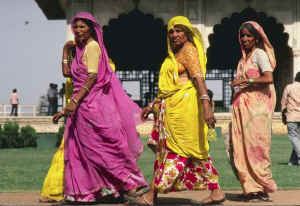
|

|
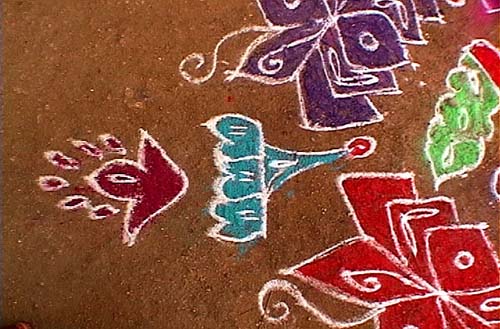
|
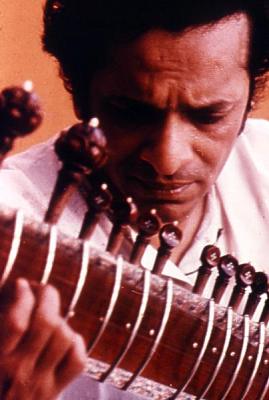
|

|
Indian Music
Indian music can be divided into two main types: North Indian and South Indian (or Carnatic). Both systems use
voice and instruments. Classical Indian music often sounds odd to a new listener. Some of the keys that the music
is played in are very different than European traditions. There are certain notes that do not exist in
European music; they are "in between".
Indian music is not based on harmony, chords, or
counterpoint. Instead, it uses combinations of melody and rhythm within musical structures called "ragas".
A musician then may improvise around this structure.
| Raag | Taal |
Musical Instruments

Raag: Melody and Mood
| "Raag" literally means "color", and that is a very good way to think of this fundamental
part of Indian music. Raag sets the mood of the piece by defining the notes to be used within it. These notes, when used together,
set a tone that brings unity to the work. A raag is a pattern of scales and the associated sounds between the main notes. A raag
is more than a key signature, however. It is defined by a modal structure, the number of notes in the group, and the "swar", or
base tonic note.
There are about 200 main raags and maybe 6,000 in total, each corresponding to a color, seasons, hour, or mood. Each has its own principle note, dominant note, and a cluster of notes that provide identity to the raag. |

Taal: The Heatbeat of Music
| Taal is the rhythm cycle of a raag. Taals can range from
3 beats to 108 beats. The division of the beat within the taal and the emphasized beats provide the
pulse of the music. In Indian music, even if two taals carry the same number of beats, they are
separated because of the different accents or divisions within each one.
Even when the vocalist is improvising within the raag or taal, he or she must return to the beat at certain defined moments for a "coming together"; the peak of the music. |

A Classical Recital
|

Instruments
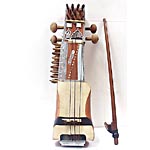
|
The SARANGI is mostly used in northern India. It is played
with a bow, but does not have frets like a violin or cello. It can play semi-tones (the notes between those
on the scale).
A sarangi has a short body with a sound board made out of goat skin. The strings are made of gut.  Click for sarangi playing by
Nicolas Magriel Click for sarangi playing by
Nicolas Magriel
(from www.sarangi.demon.co.uk) |
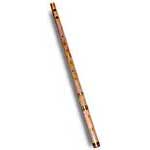
|
The North Indian flute, or BANSURI, is usually made of bamboo. It has
six or seven holes that are covered to produce different sounds.
The South Indian flute is called a VENU, and has eight holes.  Click for bansuri music by Hariprasad Chaurasia Click for bansuri music by Hariprasad Chaurasia
(from www.shanmukhananda.org) |
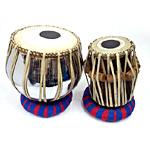
|
TABLA are played with the fingers and wrists of both hands.
The right drum is smaller and has a higher pitch than the left. However, the left often has more color and
sweeps of sound.
The drums are about 25 centimeters tall and made of goat skin. The skin is stretched so that the sound is different on different parts of the instument. The base of a tabla is wider than the top. Tablas have a range of 2 octaves.  Click for
a sample of tabla playing. Click for
a sample of tabla playing.
(from http://chandrakantha.com) |

|
The HARMONIUM came to India from Europe in the 19th century. It is
a type of organ with a hand pump. It is mostly wood, and can play many notes much as a western organ. However, its sound
is very different, mainly because of the hand pump.
 Click for a harmonium recording by
Jitendra Gore Click for a harmonium recording by
Jitendra Gore
(from http://gore-jitendra.tripod.com/) |

The Ravi Shankar Foundation and Ravi Shankar for a clear and meaningful introduction to Indian music (http://www.ravishankar.org).
Khazan (at http://www.khazana.com) for information on Carnatic music and instruments
